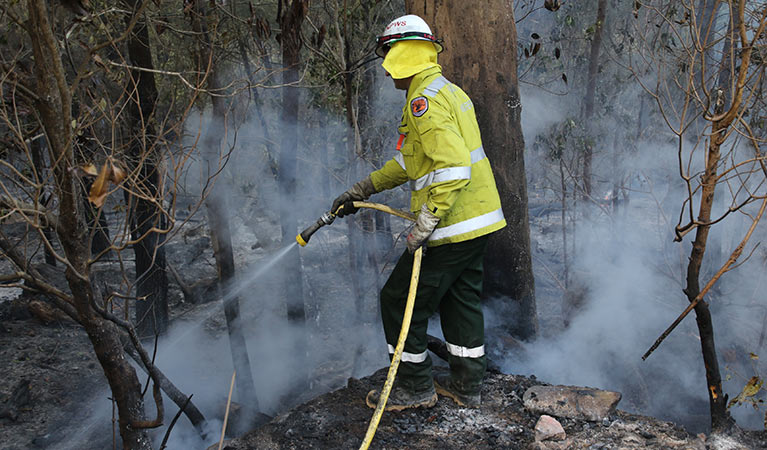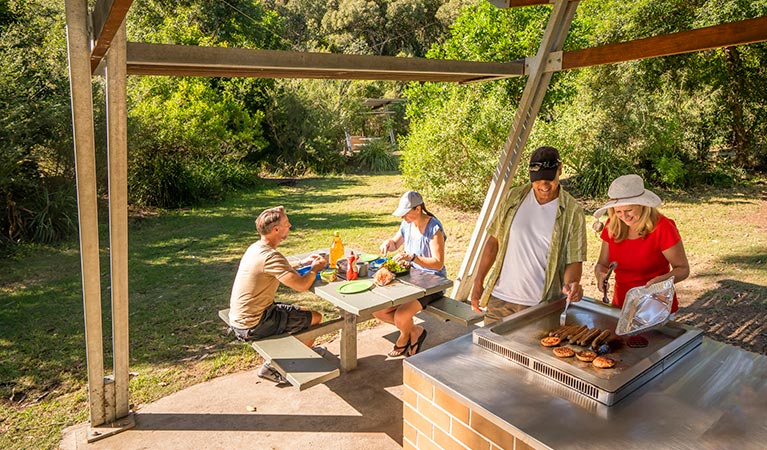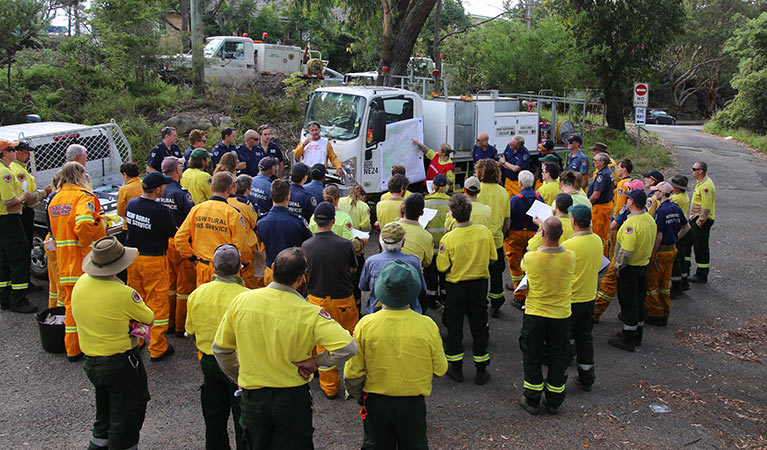Fire safety
Make sure you have the latest fire safety information if you're planning to go hiking, camping or 4WD touring in a national park.
Plan your trip
Before you go on a bushwalk or travel through a national park, do the following checks to keep yourself safe:
- Check the Fire Danger Ratings, Total Fire Bans and major fire updates on the NSW Rural Fire Service website.
- If a Total Fire Ban is in place you will not be able to light a fire out in the open.
- Check the Fires Near Me website for current fires and download the Hazards Near Me mobile smartphone app
- Check the local weather forecast
- Check if there’s any planned hazard reduction burns, park alerts, closures or park fire bans before you go.
- If a park fire ban is in place you will not be able to light a campfire or solid fuel barbecue or stove.
- Listen to local media.
- If you’re planning a remote trip, work out how you can call for help. Options may include a satellite phone or a personal locator beacon (PLB).
- Download the Emergency Plus app to your mobile or satellite phone.
- Take an emergency survival kit including a working battery-operated radio and spare batteries, first aid kit, protective clothing, waterproof torch, woollen blankets and water.
Tell somebody
Give your trip details to family and friends who are not travelling with you. Tell them when you expect to return and let them know when you have returned. For longer trips or remote areas, consider filling in a trip intention form and taking a personal locator beacon (PLB).
If you’re caught outside in a fire
- Call Triple Zero (000).
- Turn back if you see smoke ahead.
- Don’t panic or try to outrun the fire.
- Find a cleared area. Look for rocks, hollows, embankments, streams or roads to protect you. Head to lower ground, avoid hilltops and do not shelter in water tanks.
- Keep low and cover your skin.
- Drink water and cover your mouth with a damp cloth.
- Move to burnt ground when the fire has passed.
- Let someone know what is happening.
For more information, see the NSW Rural Fire Service (RFS) bushfire safety for campers and bushwalkers factsheet.
If you’re caught in a fire in your car
- Call Triple Zero (000).
- Park off the road in clear area away from trees, scrub and tall grass.
- Face the front of your car towards the fire.
- Stay in the car below the windows to protect yourself from radiant heat.
- Turn off the engine and turn on headlights and hazard lights.
- Close windows and air vents.
- Cover yourself with a woollen blanket.
- Drink plenty of water.
- Cover your mouth with a damp cloth.
- Stay down until the sound of the fire has passed, carefully leave the car (it will be hot).
For more information, see the NSW Rural Fire Service (RFS) bushfire safety for travellers factsheet.
Burned areas
Some national parks and reserves have burned areas due to bushfires or hazard reduction burning. It's very important that you stay out of burned bushland areas for the following reasons.
Your safety
Only trees directly adjacent to tracks and trails are assessed for dangerous tree limbs. Trees inside the burned areas may have been damaged by fire and branches or trees could fall down and cause injury.
To help bushland regenerate
By sticking to tracks and trails and keeping off recently burned ground it will protect and enable new plants to grow.
Reporting a fire
If you think you see a fire, note its position and phone the NPWS incident service on 1800 629 104 (24 hours) or call emergency services on Triple Zero (000).
Gathering firewood is prohibited
Please remember that visitors are prohibited from gathering firewood or removing plants in most NSW national parks.
Park safety after a fire
Bushfires can impact landscapes and infrastructure in national parks. These impacts may be short or longer term.
Some parks, activities and attractions will re-open after they are cleared as safe. Others need to remain closed to allow for recovery works or to protect the remaining areas of unburnt habitat.
When you visit, it’s important to stay on existing tracks and trails. Not only is it unsafe to wander off into other areas, but this also causes erosion and damage to fragile, recovering ecosystems.
These are some of the risks you should be aware of if you’re visiting a park that has been impacted by fire:
- Fallen trees may block tracks and trails.
- Trees or branches could fall at any time.
- Rocks and slopes may be more unstable than usual.
- Some infrastructure could be damaged or missing, including: signs, information boards, fences and barriers along tracks, huts, or picnic shelters.
- Adventure sport infrastructure, like rock climbing bolts, could be damaged or missing.
- Creeks could flood more quickly than usual after rain if lots of vegetation is missing and the water drains away into those creeks quickly.
- Water quality in creeks could be affected by an increase in ash and sediment so please consider this if you’re relying on creeks as a water source.
Always check for alerts and closures before you visit a park, and read more about how to stay safe in NSW National parks.


